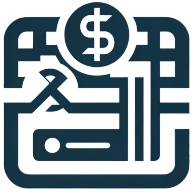4 Advice for Small Businesses Switching Payroll Technology Providers
Switching payroll technology providers can be a daunting task for small businesses, but it's often necessary for growth and efficiency. This article presents expert insights on key factors to consider when making this important transition. From prioritizing support and scalability to focusing on user-friendly platforms, these tips will help small business owners navigate the process with confidence.
- Prioritize Support and Scalability in Payroll Systems
- Choose User-Friendly Platform with Responsive Support
- Focus on Ease of Use and Support
- Invest in Reliable Customer Support for Payroll
Prioritize Support and Scalability in Payroll Systems
As a Human Resources leader with over 30 years of experience supporting both corporate teams and small business owners, I've seen firsthand how critical payroll technology is to smooth operations. In my current role as the founder of *On Demand HR Solutions*, I help small businesses implement practical, people-centered HR and payroll systems that scale with their growth.
If you're considering a switch, my top pieces of advice are:
1. Prioritize support. Payroll errors can seriously impact employee trust and business compliance, so it's essential to ask about the provider's tech support model, especially their average response time and issue escalation process. When something goes wrong, you need to know you're not just a ticket in a queue.
2. Choose a system that meets your current needs but can also grow with you. Look for scalability in features like time tracking, PTO accruals, benefits integration, and reporting.
3. Don't underestimate the importance of a clean, accurate transition plan. Data migration can make or break your implementation. Verify how employee records, tax data, and year-to-date payroll information will transfer, and confirm who's responsible for each step.
The right payroll system should reduce your admin burden, not add to it. Smart planning upfront can make all the difference.
Norma Frahn | On Demand HR Solutions
Email: hello@ondemandhrsolutions.com
LinkedIn: https://www.linkedin.com/in/normafrahn/

Choose User-Friendly Platform with Responsive Support
If you're thinking about switching payroll providers, my biggest piece of advice is to prioritize ease of use and support. It's not just about features on papers, it's about how well the platform actually fits into your work and whether help is available when you need it.
When we made the switch, we looked at how intuitive the system was for both our admin team and employees. A provider could check every box on functionality, but if it's clunky or hard to navigate, it'll just slow everyone down. Also, responsive customer support made a huge difference during setup. Look for a provider that makes onboarding smooth and has people you can actually reach when questions pop up. That support can make or break your experience.

Focus on Ease of Use and Support
For small business owners considering a switch to a new payroll technology provider, my top advice is to prioritize ease of use and customer support. Payroll involves critical tasks like tax filings, employee payments, and compliance--so the platform should be intuitive, with clear workflows and minimal room for error. But even more importantly, make sure the provider offers responsive, knowledgeable customer support, especially during onboarding and tax season.

Invest in Reliable Customer Support for Payroll
If you're a small business owner considering a change in payroll providers, my advice is to prioritize customer support above all else. When something goes wrong, you'll want a real person who can fix it quickly.
A few years ago, we transitioned from a low-cost provider to a slightly more expensive platform. The cheaper system frequently made errors with payment dates, especially during holidays. One month, an error caused a delay in paying our factory team. That incident alarmed me because for many of our workers, even a one-day delay is significant. I called their support line, and it took two days to receive a response.
That experience prompted us to make the switch. We chose a provider that offered real-time support and assigned us a representative who was familiar with our business. Although it cost more, the peace of mind was worth it. We haven't experienced a missed payment since, and whenever we have a compliance question or a rule update in a different country, we receive answers within hours rather than days.
Additionally, don't just compare features; test how the platform works for your actual team. We ran both systems concurrently for one pay cycle to determine which handled taxes and reporting more effectively. That test made the decision clear.


